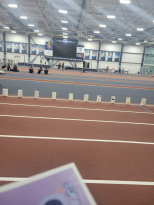Two Second Chances
In May of 2012, after a gymnastics competition Taylor Kuperwicz woke up the next morning feeling sick and wasn’t able to get off the floor.
After going to the doctors, they misdiagnosed her saying she might have a concussion or vertigo. Still feelingsick Taylor went back to get anMRI and a CT scan. The results came back and she was diagnosed with an Arteriovenous Malformation (AVM).
“Arteriovenous Malformationis a tangle of veins and arteries, there is supposed to be capillaries in between where gas exchange occurs and there is no capillaries, they are the speed bumps that slow the blood down, so my brain didn’t form those in my left parietal lobe and it was basically vein to artery and it created a tangle.”
According to American Stroke Association, brain AVMs occur in less than 1 percent of people. About one in 2,000–5,000 peoplehave an AVM. There is no known reason howAVMs occur. AVMs can occur anywhere in the head. The risks include permeant brain damage, bleeding in the brain, and death along with weakness in legs or arm, paralysis, and brain damage.
The first brain surgery was nine hours and post-surgery she had to lay flat for eight hours without a pillow or anything under her back. After a few weeks Taylor began to get back to her normal routine. A year later on the day she went to the hospital to get an angiogram as a checkup.Her results showed that her AVM had regrown and she was scheduled the followingtwo weeks to go under surgery again. The second surgery was six hours.
Since the second brain surgery Taylor has gone back every year to get an angiogram for three years. Now when she goes for her yearly checkup she gets MRIs and when she hits the five-year mark she will have another angiogram. After that she goes back to MRIs until she hits ten yearsthanshe will have anotherangiogram and after that she won’t be required to have checkups. After ten years it is unlikely it will reoccur again.








